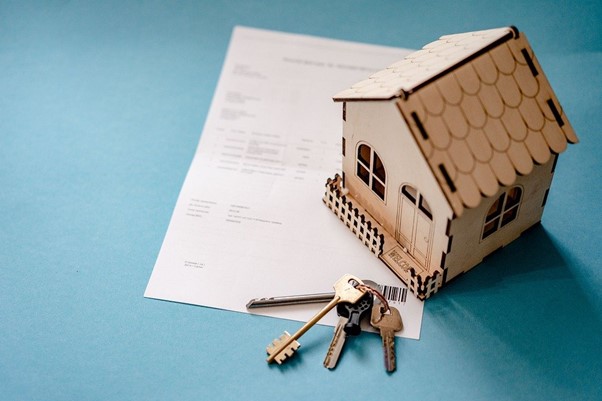
Introduction
Roofs are one of the most important parts of any home. A roof protects your family from the elements and keeps them safe from rain, snow, wind, and everything else mother nature can throw at you! Roofs are also an investment in your house. You want to make sure it lasts as long as possible so you don’t have to replace it again anytime soon. In this blog post, we will be discussing all types of roofs that would be best for Florida homes.
How many different types of roofs can there be?
There are many roofing types to choose from, and you need to be sure that the one you choose will last a long time. Roofing companies in Pensacola can help you find the right one for your home’s needs.
What Is a Tile Roof?
Tile roofs are a popular choice in Florida. They’re made from clay or concrete and have a long history of providing protection from the elements. Tile roofs last for decades without needing to be replaced, making them durable and affordable. Tile roofs are also an excellent choice for homes located in windy areas because they feature multiple layers that help prevent damage from high winds or hurricanes.
However, tile roofing does require more maintenance than some other types of materials (such as metal). You will need to clean your tiles regularly—ideally once every year—to remove debris from them so it doesn’t get into the gutters or cause roof leaks down the line.
What Is the Tile Roof Process?
Tile Roofing Installation Process
To get your tile roof installed properly and efficiently, it’s important to understand the tile roofing installation process. Tile roofing is a two-step process that requires you to first install a starter strip and then apply tiles over the top of it. The starter strip provides support for the tiles so they can be laid on straight, flush with one another, and without gaps between them. This will make your job look more professional and keep water from getting into your home through tiny cracks between each individual piece of tile.
Pros and Cons of Tile Roofs
Tile roofs are durable and require little maintenance, but they are more expensive than other types of roofs. Tile roofs also have a higher initial cost, because they must be installed by professionals.
While tile roofs can last for decades, they require regular cleaning and sealing to ensure their longevity. If you prefer a more hands-on approach to home maintenance, tile roofs may not be the best option for you.
Tile is an excellent choice if you want your roof to be energy efficient—it reflects heat rather than absorbing it as conventional asphalt or wood shingles do. This means that the temperature inside your home will stay cooler during hot summer months without requiring an air conditioner or fan (although fans should still be used even with a tile roof).
What Is an Asphalt Shingle Roof?
An asphalt shingle roof is the most common type of roof for homes in the U.S. Construction crews install it by laying down an underlayment, which is a layer of protective material that helps prevent cracks and leaks. Next, they install strips of plywood to create a platform for the shingles. They nail these down so they don’t move or shake during storms or high winds, which could cause leaks or even damage your home’s structure if left unchecked.
Finally, workers lay several rows of sheets made from either fiberglass or organic materials like wood pulp down over the plywood base until they reach the desired thickness (usually between three and six inches). Then they apply hot asphalt cement directly onto those sheets using special machines that help spread it evenly throughout each layer before smoothing out any imperfections left behind by hand tools such as metal rakes or squeegees—tools used to ensure consistent coverage without excessive waste materials creating wasted labor hours spent repairing damaged areas later on down streamline visits after initial installation has been completed successfully!”
The Installation Process for Asphalt Shingles
The installation process for asphalt shingles is a two-step process. The first step is to lay the shingles on the roof. The second step is to nail them down with a nail gun.
Asphalt shingles are installed in overlapping rows, called courses. Each course is covered by another overlapping course of shingles, which creates staggered rows of overlapping shingles that look like fish scales when viewed from above. In addition to being overlapped, each row of shingles must also be staggered from side to side across the roof so that there’s an equal amount of space between each row and no two rows are parallel to one another (this helps shed water).
The nails used for installing asphalt roofs need to be driven in at an angle that creates a 45-degree angle between your hammer and the point where you’re driving the nail into your roof decking materials (called underlayment). When driving these nails into place, make sure you don’t hit too hard as this could cause damage or even breakage if they’re not driven properly!
Advantages of Asphalt Shingle Roofs
Asphalt shingles are the most common type of roof material. They’re inexpensive, easy to install, and available in a wide variety of colors, designs, and styles. If you want to keep your roof repair costs down (and who doesn’t?), asphalt shingles are a smart choice for your new home in Florida or for any other part of the country where these roofs perform well.
They also come with other advantages:
- Asphalt shingles are extremely durable; they stand up well to extreme weather conditions such as hurricanes and tornadoes. They can last up to 50 years without needing replacement if properly installed by professionals with experience installing this kind of material — which is another reason it makes sense to hire a professional contractor rather than do-it-yourself!
Disadvantages of Asphalt Shingles
While asphalt shingles are one of the most popular roofing materials in Florida, they also have several drawbacks that homeowners should be aware of.
- They’re prone to damage. Shingle roofs can be damaged by wind, hail and even tree limbs falling on them. Asphalt shingles are particularly susceptible to wind damage because they have a relatively low weight-to-thickness ratio compared with some other roofing materials. This means that an area with high winds may require a more durable material like metal or tile for its roof so it doesn’t get ripped off during storms or hurricanes.
- They’re not energy efficient. The R-value (or thermal resistance) of asphalt shingles ranges from about 4 to 10 per inch; this makes them significantly less energy efficient than many other types of material used for residential roofs today.* They’re not good for high wind areas.* They’re not good for areas with a lot of snow.* They’re not good for areas with a lot of rain
There are several options when it comes to roofing your home.
There are several options when it comes to roofing your home. The type of roof you choose depends on many factors, including the style of your home and your budget. There are five main types of roofs: tile roofs, asphalt shingle roofs, metal roofs, composite, and shingle. Floridians, often turn to the pros of metal roofing Pensacola Florida.
Tile is the most traditional type of roofing material and has been used for centuries all over the world. Tile roofs can be made from clay or concrete tiles that have been fired at high temperatures so they’re durable enough to withstand Florida’s weather conditions. They come in a wide range of colors which allows homeowners to match their house with their personality or preference–whether they prefer modern or traditional style homes.
Conclusion
There are a lot of great options when it comes to roofing your home. While there are many things that can be considered when choosing the best type of roof for your home, we hope we have provided some insight into what each one may entail. If you have any questions about which type is right for you, contact us today!



